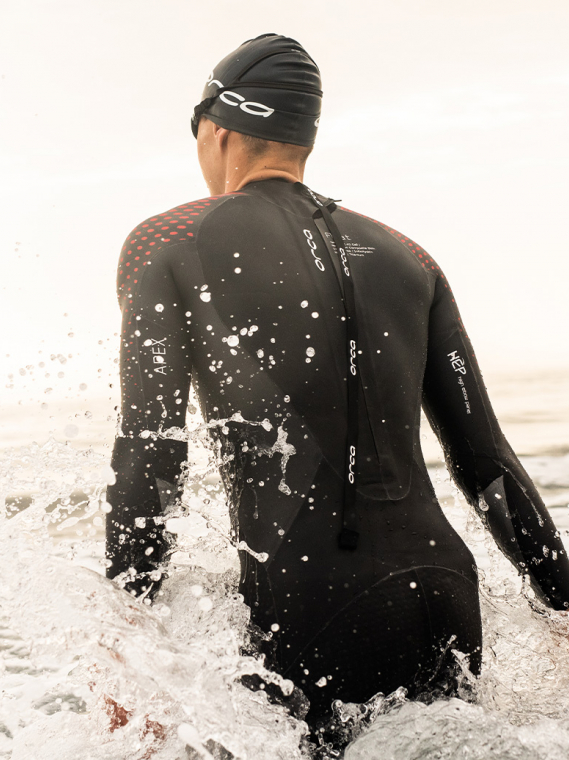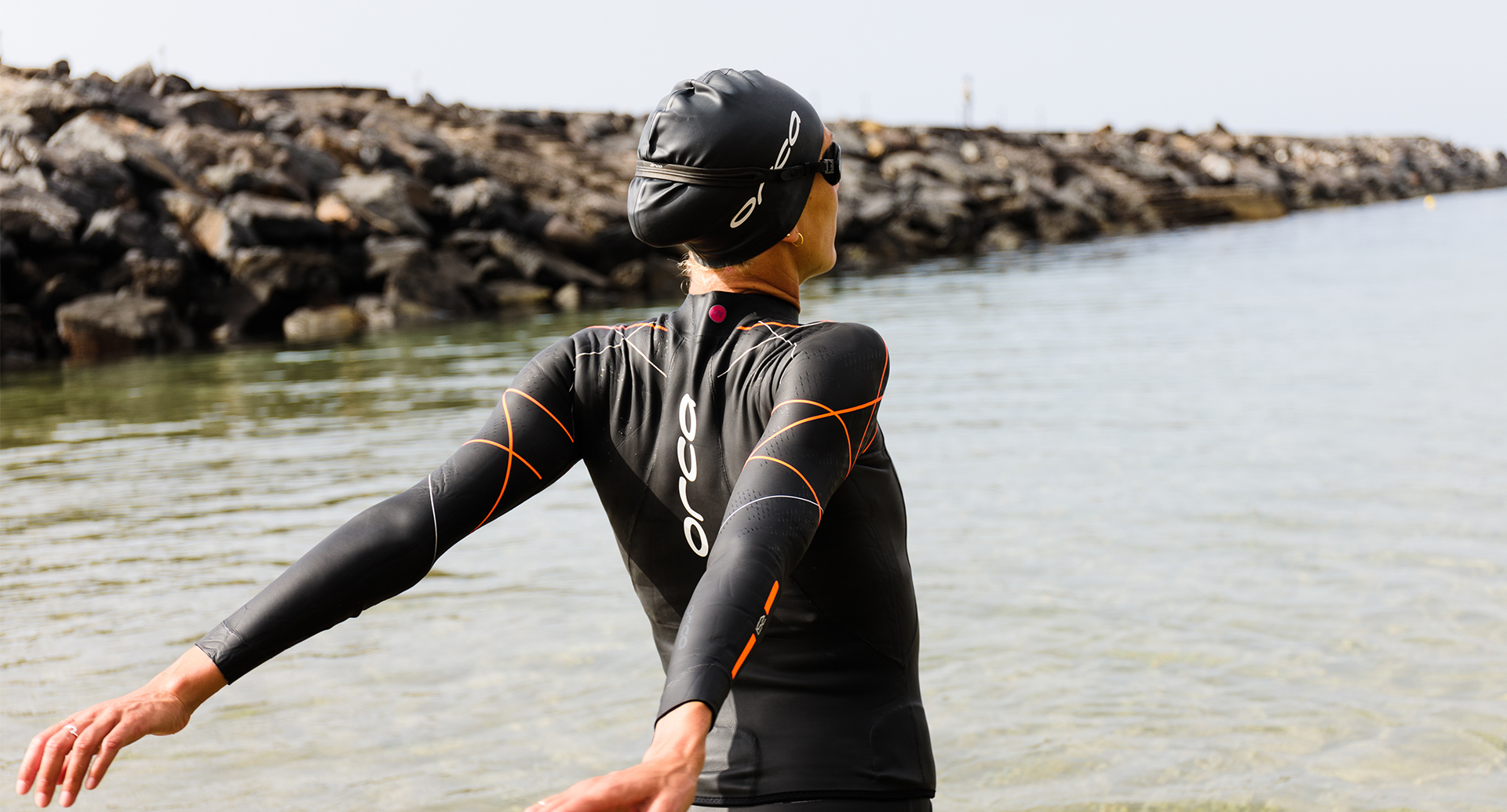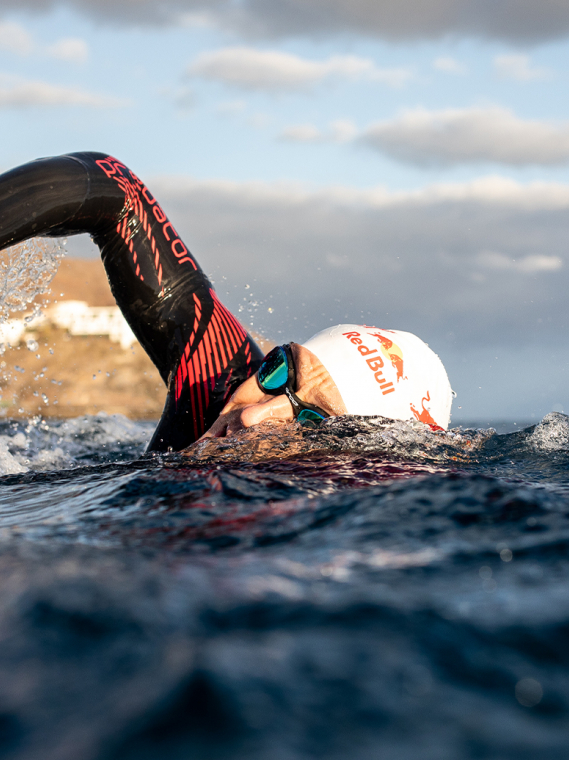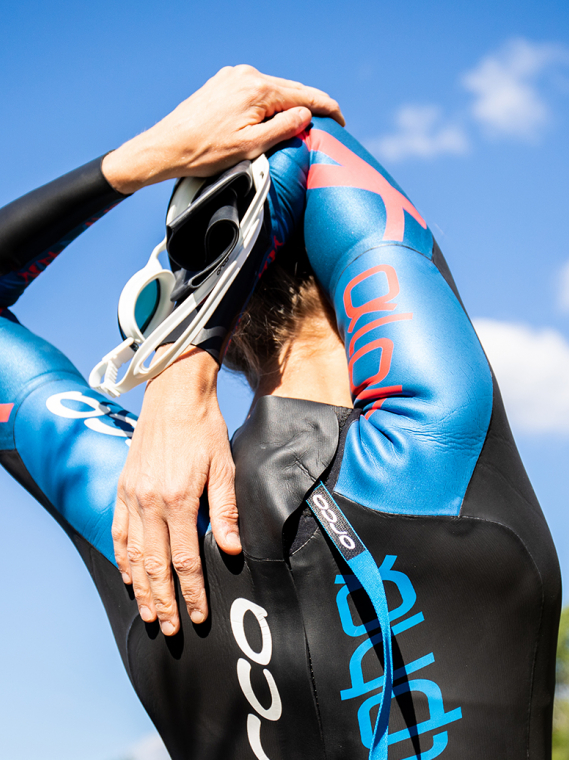
Emotional intelligence, the key to athletic performance?
The ironminds
March 28, 2022
In 2010 at the Ironman World Championship, eventual winner Chris McCormack was being hunted by Andreas Raelert who was getting closer and closer in th...
Orca pro triathlete, US Olympic athlete, and soon to be mom, Sarah Groff shares her journey and training tips for triathlon preparation through pregnancy and beyond!

Orca pro triathlete, US Olympic athlete, and soon to be mom, Sarah Groff shares her journey and training tips for triathlon preparation through pregnancy and beyond!
SARAH TRUE - Professional triathlete
Upon becoming pregnant, one of my first questions was how I would manage training over the upcoming months of pregnancy and the postpartum period. Beyond my profession, swimming, biking, and running are a huge part of who I am; being active is central to my identity and brings me joy. How could I continue these activities in a safe and balanced way during this time?
While I was able to gleam some vague answers from my peers in sport, I’ve relied mostly on intuition about my body and the medical advice of my team over the past nine months. As I approach the final weeks of pregnancy and the postpartum phase, I fully expect that I’ll continue relying on a similar tactic while transitioning back to a formal training plan.
Although ultimately an athlete must do what’s appropriate for themselves, I’ve been curious what other professional athletes do for exercise in a week. Since I personally find the approach of others interesting, I’ve decided to share a sample week from my third trimester, providing some context to allow for better understanding for my decisions. It is important to emphasize that while I am not an expert, I have relied on sound medical advice from experts to guide my decision-making. Furthermore, every pregnancy and every woman’s circumstances are different; the following should not be read as a guide for anyone else, but rather a snapshot of what has worked for me. Some women can do more, others less - we all must figure out what is right for us!


VOLUME
For most of my pregnancy, I’ve managed to consistently maintain up to 20 hours of exercise per week with a few lower volume weeks following foot surgery. When not growing a human in my body, my coach will generally have me doing 25-30 hours per week. While the total volume has not changed massively, the volume of the individual sessions has. I currently max out at 45-minute runs, 3-hour rides and 1-hour swims- a big shift from Ironman training in which I will do up 32-kilometer runs, over 5-hour bike rides and 90-minute swims. Doing longer sessions really tire me out during pregnancy, so I find it more effective to cap exercise at the durations above.

INTENSITY
As my medical team reassured me, there were no caps on the intensity I could do; my body would limit me rather than any imposed limitations. I discovered that despite my interest in doing some harder efforts, my body simply wouldn’t let me at a certain point. I was able to continue with some intensity into second trimester but hit a physical wall eventually. Not only does intensity completely exhaust me, but serious acid reflux prevents anything beyond easy training. In addition, decreased lung capacity (thanks for squishing my organs, kiddo) causes cramps and discomfort. During “normal” training, hard sessions provide the framework for my training; targeted intensity creates training adaptation that makes me stronger and fitter. While I miss the intentionality and challenge of these sessions, I know that they’ll return at a certain point after baby arrives, a prospect that excites me.

SCHEDULING
For years, my days have been centered around my training plan. I gain satisfaction and a sense of fulfillment from the structure and daily box ticking of training. In pregnancy, however, I quickly discovered that a weekly training plan was no longer relevant. With so many fluctuations in fatigue and feeling, I could no longer predict how my body would respond on a given day. Instead, my coach and I shifted to some general guidelines for the week in second trimester. When I hit third trimester, we let Coach Baby take control of my training. When I wake up in the morning, I have no preconceived notion of what I will do that day. Instead, I’ll let my fatigue levels decide how much I’ll do. Sometimes that means swimming, biking, and running and sometimes that means taking a nap. By adopting a flexible approach, exercise transforms from a potential obligation to a celebration. While I look forward to the return of structure, having this phase has been refreshing and reminded me how much I simply love to move my body.

ADJUSTMENTS
As my body has changed, I have adjusted to be able to more comfortably bike and run. Thankfully swimming is quite a bit more accommodating to a bulging belly, aside from flip turns! For the bike, positioning requires constant changes. Although I haven’t been able to ride in a Time Trial position for months, I still find riding to be fun and rewarding well into third trimester with some tweaks. I will vary positions through mixing up the bikes I ride, opting for a more upright position on days when the belly is more uncomfortable. For the run, I pay attention to soreness in my pelvic floor and will shorten or opt out of running on days when I feel residual sensations from the previous day. For both sports, I have to chart regular bathroom stops due to the squished internal organs.

CONDITIONS
Although my medical team is very relaxed about my swimming, biking, and running, I did receive a firm warning about exercising in heat and potential harm to the fetus. During a few unseasonably hot and humid days during week 34, I opted for indoor training and riding early in the cooler morning. I normally would embrace days like these to create heat adaptation, rather than avoid warm conditions. Since triathlons often take place in hot summer conditions, heat preparation in training helps optimize performance in racing. Currently prep for racing is not the goal, but having a healthy baby is. Kona heat training is temporarily replaced with keeping baby cool during exercise!

METRICS
Like many triathletes, I love data. Tracking power, pace, and other metrics keeps me motivated, engaged, and provides measurable performance benchmarks for my coach and I to structure our training. In third trimester, the only measurement that I use is time. Ignoring everything except this one measure is simultaneously liberating and disorienting. While I could focus on my standard numbers, they simply aren’t relevant to my current phase.
Tracking data will return with the structured, hard work. In the meantime, I remain focused on my goal: to stay healthy for myself and for my baby. For me, that means a solid number of easy hours of swimming, biking, and running. Finding the right balance has taken some trial and error and a significant amount of flexibility. From my understanding of parenting, having this approach isn’t just appropriate for triathlon training, but also serves as great preparation for the phase that lies ahead of me: being both a mom and an athlete.
ABOUT SARAH TRUE
American triathlete Sarah True began her career in the ITU series, where she competed for 12 years and won several placements. During this period, Sarah participated in two Olympic Games; then in 2018, she decided to challenge herself and began competing in long distance. In her first year as a long-distance triathlete, she won several races and was able to compete at Kona, where she came in fourth place. Her grit and tenacity have elevated her to the top of the podiums and her fight to bring visibility to mental health issues in athletes has made her a role model for many fans and lovers of sport.

March 28, 2022
In 2010 at the Ironman World Championship, eventual winner Chris McCormack was being hunted by Andreas Raelert who was getting closer and closer in th...

June 3, 2021
Chatting with triathletes Bart Aernouts, Sebastian Kienle and Sarah True is always a pleasure and allows us to find out how they prepare themselves fo...

May 17, 2021
After a long professional career in both short and long-distance triathlon, Sarah True faces one of her most important challenges: the arrival of her...